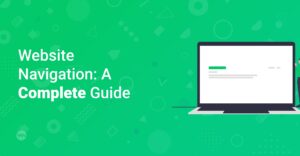Preface
Are you ready to transform your website from bland to grand? A captivating full-screen background image can instantly elevate your site’s visual appeal, creating a memorable first impression. If you’re using WordPress with the Astra theme and Elementor page builder, you’re in luck! This powerful combination makes it surprisingly easy to add stunning, immersive backgrounds. This guide provides you with simple and straightforward steps. Let’s dive in and learn how to add full-screen background images to your website using Astra and Elementor!
Why Use a Full-Screen Background Image?
Before we get started, let’s explore why you might want to use a full-screen background image in the first place:
- Visual Impact: A high-quality, relevant image can immediately grab a visitor’s attention and set the tone for your entire website.
- Brand Identity: Background images can reinforce your brand’s personality and message. Use images that align with your brand’s aesthetic and values.
- User Experience: A well-chosen background can enhance the user experience by providing context, creating a sense of immersion, and guiding the visitor’s eye.
- Modern Design: Full-screen backgrounds are a popular trend in modern web design, giving your site a contemporary and stylish look.
Prerequisites
Before we begin, make sure you have the following:
- WordPress Installed: You’ll need a working WordPress installation. If you don’t have one yet check out this guide to get started.
- Astra Theme Installed: The Astra theme is a lightweight and highly customizable theme that works seamlessly with Elementor. You can download it from the WordPress theme directory. Or get Astra Pro for even more functionality.
- Elementor Page Builder Installed: Elementor is a drag-and-drop page builder that makes it easy to create custom layouts and designs. You can download the free version from the WordPress plugin directory or upgrade to Elementor Pro for advanced features.
Hint: If you’re new to Elementor check out this complete guide to familiarize yourself with the basics.
Method 1: Using Astra Theme Settings
Astra provides built-in options to set a background image for your entire website or individual pages. This is a simple and effective way to add a full-screen background without using Elementor.
Step 1: Access the WordPress Customizer
Go to your WordPress dashboard and navigate to Appearance > Customize. This will open the WordPress Customizer, where you can modify your theme’s settings.
Step 2: Navigate to Global > Background
In the Customizer, find and click on the Global tab. Then, select Background.
Step 3: Set the Background Image
Here, you’ll find options to set a background image. Click on Select Image to upload an image from your media library or upload a new one. I recommend reading on how to create high resolution screenshots to improve image quality.
Step 4: Configure Background Settings
Once you’ve selected an image, you’ll need to configure a few settings to make it a full-screen background:
- Background Repeat: Set this to No Repeat to prevent the image from tiling.
- Background Size: Set this to Cover to make the image fill the entire screen, or Contain to ensure the entire image is visible (which may result in some empty space around the edges).
- Background Position: Set this to Center Center to center the image both horizontally and vertically.
- Background Attachment: Set this to Fixed to make the background image stay in place as the user scrolls.
Step 5: Publish Your Changes
Click the Publish button at the top of the Customizer to save your changes and make them live on your website.
Method 2: Using Elementor Sections
Elementor offers even more flexibility and control over background images. You can add full-screen backgrounds to individual sections of your pages, allowing for unique designs and visual effects.
Step 1: Edit Your Page with Elementor
Go to the page you want to edit and click the Edit with Elementor button.
Step 2: Add a New Section (or Edit an Existing One)
If you’re starting from scratch, click the + icon to add a new section. If you want to add a background to an existing section, hover over it and click the Edit Section icon (the six dots at the top).
Step 3: Go to the Style Tab
In the Elementor editor panel, click on the Style tab.
Step 4: Set the Background Image
Under the Background section, choose Background Type: Classic. Then, click on the Image box to select an image from your media library or upload a new one.
Step 5: Configure Background Settings
Just like with Astra, you’ll need to configure the background settings to make it full-screen:
- Position: Set this to Center Center.
- Repeat: Set this to No-repeat.
- Size: Set this to Cover.
Step 6: Adjust Section Settings for Full-Screen
To ensure that the background image covers the entire screen, you need to adjust a few section settings:
- Layout > Height: Set this to Fit to Screen.
- Layout > Column Position: Set this to Stretch.
- Style > Border > Border Type: Make sure no border is assigned.
Step 7: Add Content to Your Section
Now that you have your full-screen background image, you can add content to the section, such as headings, text, buttons, and images. Make sure your content is readable against the background image by using appropriate colors and contrast.
Step 8: Publish or Update Your Page
Click the Publish or Update button to save your changes and make them live on your website.
Info: If you plan on creating a sticky header for your website be sure to check this article here: How to Create a Sticky Navigation for Astra Starter Templates with the Free Version of Astra
Method 3: Using Elementor Background Overlay
Elementor Background Overlays are another great way to implement a full-screen background that can dynamically change and have more visual acuity.
Step 1: Edit Your Page with Elementor
Go to the page you want to edit and click the Edit with Elementor button.
Step 2: Add a New Section (or Edit an Existing One)
If you’re starting from scratch, click the + icon to add a new section. If you want to add a background to an existing section, hover over it and click the Edit Section icon (the six dots at the top).
Step 3: Go to the Style Tab
In the Elementor editor panel, click on the Style tab.
Step 4: Set the Background Image
Under the Background section, choose Background Type: Classic. Then, click on the Image box to select an image from your media library or upload a new one.
Step 5: Configure Background Settings
Configure the background settings to make it full-screen:
- Position: Set this to Center Center.
- Repeat: Set this to No-repeat.
- Size: Set this to Cover. Alternatively you can use “Contain” to reveal full images.
Step 6: Background Overlay
Go to Background Overlay: Here you can choose a classic overlay with a color that appears above your background image or you chose a gradient as an overlay. Additionally you can define the opacity that defines how visible your background image is.
Step 7: Blend Mode
Go to Blend Mode: Here you can define what happens when the background overlay is blended with the background image beneath. This gives you opportunities to change the complete appearance of the background image.
Tips for Choosing the Right Background Image
- Resolution: Use high-resolution images to ensure they look sharp on all devices. Avoid using low-resolution images that can appear pixelated or blurry. One option to achieve great images is the usage of an AI. So be sure to check our article about the top 10 AI plugins for WordPress.
- Relevance: Choose images that are relevant to your website’s content and brand identity. A generic or unrelated image can be distracting and detract from your message.
- Color Palette: Consider the color palette of your website and choose images that complement your existing colors. A harmonious color scheme can create a visually appealing and cohesive design.
- Contrast: Ensure that there is enough contrast between your background image and your content to make your content readable. Dark text on a light background or vice versa is generally a good rule of thumb. A great article for choosing images can be found on shutterstock.
- File Size: Optimize your images for the web to reduce file size and improve page loading speed. Large images can slow down your website and negatively impact user experience and SEO. You can use online tools like TinyPNG or ImageOptim to compress your images without losing quality.
Info: Optimizing your website for search engines is crucial for attracting more visitors. Be sure to implement effective SEO strategies to improve your website’s visibility. Read more at this quickstart guide for wordpress
Common Issues and Troubleshooting
- Image Not Displaying: Double-check that you have selected an image and that the file path is correct. Also, make sure that the image file is not corrupted.
- Image Not Full-Screen: Ensure that you have set the
Background SizetoCoverand adjusted the section settings toFit to Screenin Elementor. - Content Not Readable: Adjust the colors and contrast of your content to make it readable against the background image. You can also add a background overlay with a semi-transparent color to improve readability.
- Website Slow Loading: Optimize your images for the web to reduce file size and improve page loading speed. Large images can significantly slow down your website.
Conclusion
Adding a full-screen background image to your website using Astra and Elementor is a simple yet powerful way to enhance its visual appeal and create a memorable user experience. By following the steps outlined in this guide, you can easily transform your website from ordinary to extraordinary. Whether you choose to use Astra’s theme settings or Elementor’s advanced features, the possibilities are endless. So, go ahead and experiment with different images and settings to create a unique and captivating design that reflects your brand’s personality and message.
Remember to choose high-quality, relevant images, optimize them for the web, and ensure that your content is readable against the background. With a little creativity and attention to detail, you can create a website that not only looks great but also engages and delights your visitors.



